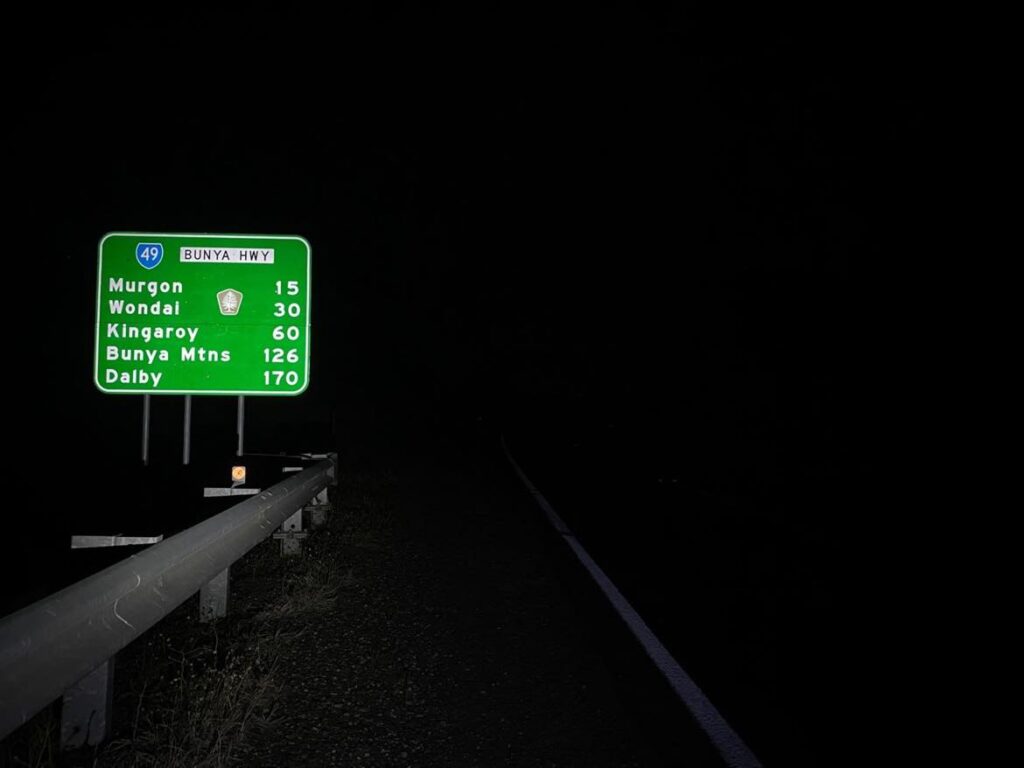When an athlete first approaches you with assistance with their training, one of the things you discuss are their goals and the time they have available to commit to these goals. This athlete commenced training with SDC in March 2021 with his major goal being to complete an Audax Super Randonnée 600 in 6 months’ time. Essentially this event is a 600km self-supported ride that has at least 10 000 metres of elevation in it. It is a special kind of endurance event, as Audax riders are a special breed. The target event was in the snowy mountains. However, with COVID essentially halting travel inter-state, the athlete changed the target event to the Nutbash City Limits Audax 600 about 6 weeks earlier than planned. This was a Queensland based 600km ride with 7000m of elevation that needed to be completed in 40 hours. Therefore, a little less challenging, but still a ride of epic proportions.
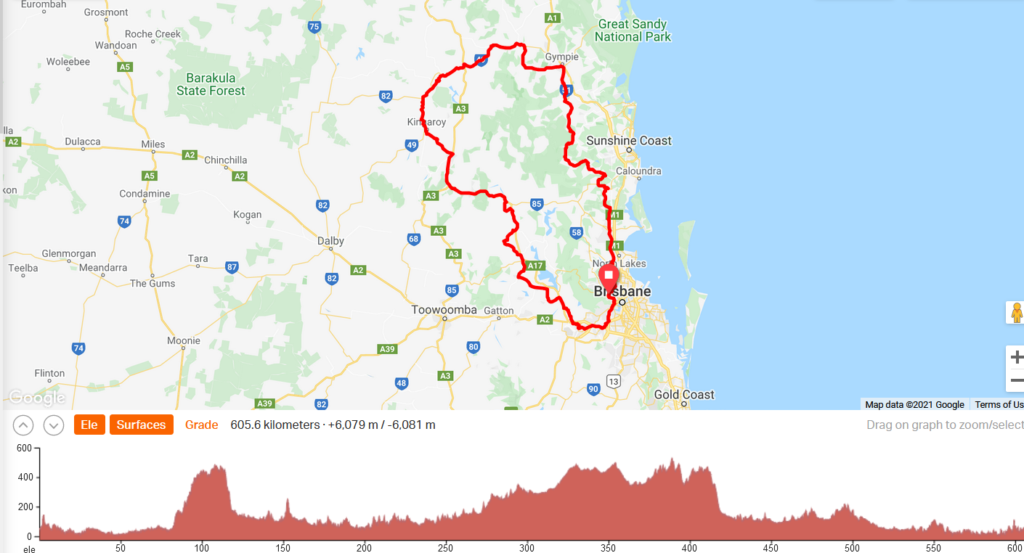
The athlete initially indicated he would have 10-12 hours per week to train for the event. This was revised in late June to 8 hours per week due to life demands. We all have them. They are called a job and a family! The challenge was to come up with a training program that would prepare him best for the demands of the event. This is separate to the logistics of the actual event; but I shall cover that as well. The athlete’s starting FTP was 235W. Keep in mind that the power is the external reflection of what is happening internally in the athlete. The power meter and zones are used to guide the training process. We are not actually measuring any changes that are occurring internally physiologically. But we are modeling them using the power meter as a guide.
In terms of the preparation, I decided on a polarised training program. This would consist of sessions predominantly on the indoor trainer during the week designed to increase FTP. The indoor trainer is much more time efficient than training outdoors. This was because the athlete only had 2-3 hours available during the week in one-hour blocks. He could also fit in one longer ride on the weekend of 4-5 hours duration. Sometimes I managed to squeeze 6 hours out of him.
The rationale behind this approach was that the week day trainer sets would improve his functional threshold power, with all of the associated adaptations. The weekend longer ride would focus on endurance, fatigue resistance and nutrition. These were done at low intensity, though as it got closer to the event the intensity of the hills in the longer rides was increased. In summary, a dual pronged approach that focused on adaptations at both ends of the spectrum. Of course the actual event was to be completed at a relative low intensity. But if you increase FTP then it means the 600 would (theoretically) be completed far more comfortably, with more in reserve. A typical training week looked like this.

You will see that the trainer sets used were selected from TrainerRoad in some instances. TrainerRoad is not essential, as at SDC we have these workouts built in TrainingPeaks. This means they can be pushed to Zwift as a custom workout and completed there. Therefore either virtual platform can be used. The key lies in selecting the appropriate sessions to use.
The athlete was very compliant with the training program. A thoughtful and reflective rider who took on board the training and trusted the process. Quite the pleasure to work with actually. We did not formally ’test’ the FTP again, but it was being modeled in WKO5 continuously. It improved to 261W by the time of the event in early September, though the numbers indicated it was likely even higher than this.
Apart from the training program, these events require logistical planning. Fortunately the athlete had completed a 400km Audax ride in 2019. I was able to use this as a guide to the planning for the 600 event, even though he was not using a power meter or heart rate monitor at that time. I knew he had held 23kph for that event, and I could see how long the breaks were that he had taken. I could also see his cadence (60), and that turned out to be useful as well. Never under estimate the value of what you have done in the past. It is a great predictor of what you are capable of in the future.
During the week before the event we settled on the plan. In summary:
- Riding speed of 24kph
- Try and increase the average cadence to 70
- Do not attack the climbs, tap up them and preserve the legs
- Do not look at power or use it as a guide (counter intuitive I know)
- Have average speed and average cadence as fields on a screen on the head unit. Refer to these occasionally. Given the main screen on the head unit is the map to guide, it was a matter of setting the supplementary screens of interest.
- Importantly, do not get sucked into doing the speed that other riders in the event may be doing. Ride your own event.
The other area that required planning was of course nutrition. Even more so as this was a self-supporting event. The rider was gluten free for medical reasons which added another layer of challenge. We planned out the stops in advance and they were roughly 50km apart. The rider would carry 2 x 750ml bidons, one with water and one with fluid nutrition. He would also carry additional nutrition, and had worked out where along the route he could purchase gluten free food.
Probably the most significant thing we planned is that he would take an extended rest break when he reached the 350km checkpoint. We had calculated that if he kept his average of 24 kph then he would reach this checkpoint at 9pm or thereabouts. This meant he could eat and rest for around 6 hours, get up at 4am, and still make the 8am checkpoint that was 60km away in time. However, it meant that he had a pretty challenging last section of riding in the dark, along sections of rail trail. He was up to the task though and arrived into Kingaroy pretty much spot on target time.
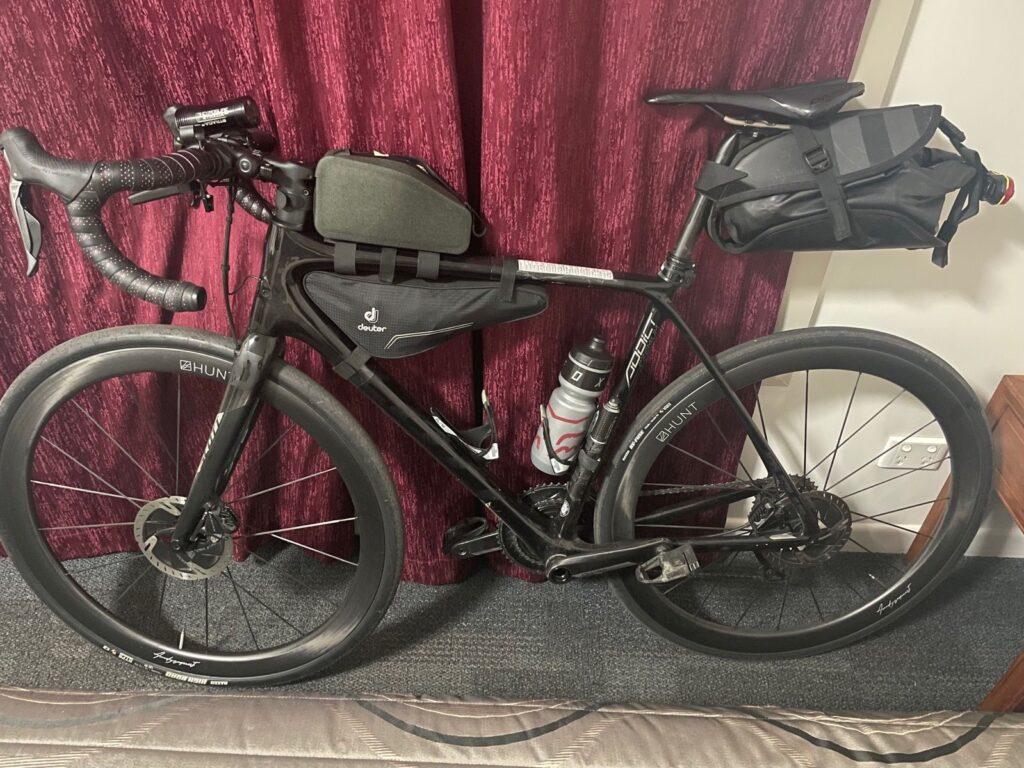
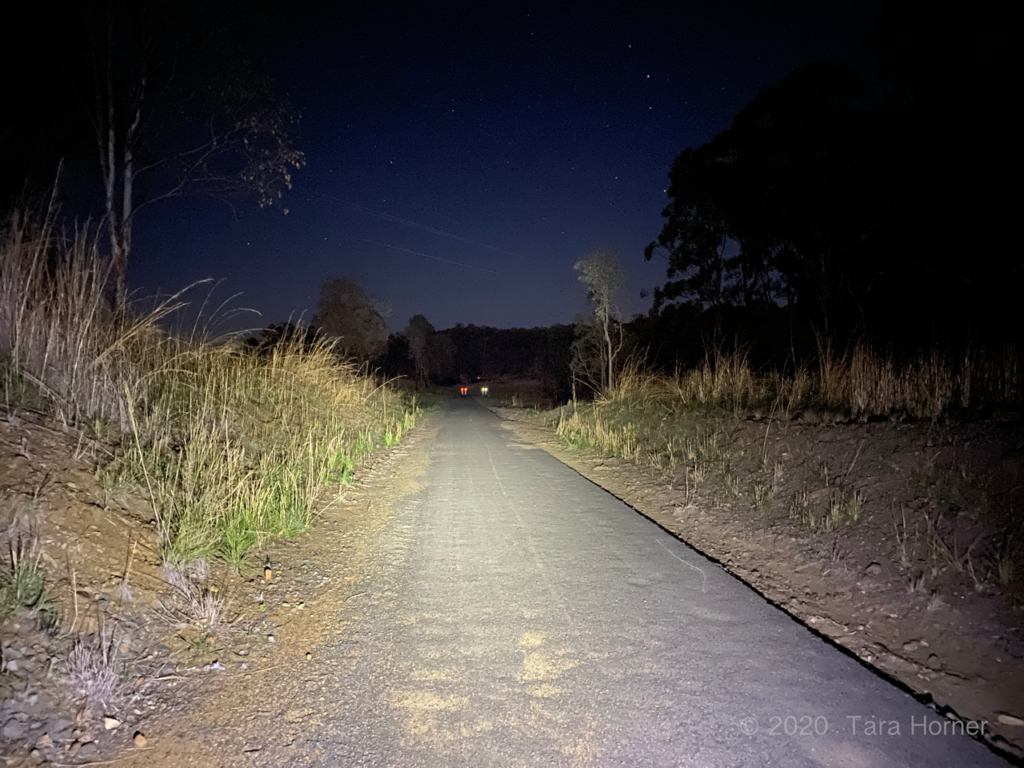
Here is the TrainingPeaks file for day 1 from Brisbane to Kingaroy. The gaps on the X axis were when the rider was taking breaks. Summary stats are in the right hand box. The rider was right on target and riding to the plan.
Distance: 346km
Average speed: 24.2kph
Average cadence: 77
Intensity Factor: 0.59

The rider reported not sleeping terribly well and taking a while to fall asleep. He may, or may not have also reported that he was ‘fart arsing’ around a bit (his words, not mine) and should have got himself sorted sooner. The sound of the free hubs of the other riders’ bikes woke him just before the 4am alarm and he got on the move again.
From a coaching perspective one of the most interesting things is how different the data on the second day looks compared to the first day. It was ridden at a lower intensity, however the efficiency was identical to day 1. That is, the drop in power on day 2 was accompanied by a drop in heart rate that was completely in line with the decrease. It is best demonstrated in this image.

Day 2 was an exercise in mental strength, and that was always going to be the case. In addition, the temperature increased considerably which provided another challenge. You can see the overlap of temperature in blue on this image. Add to this some gut issues, and difficulty accessing gluten free solid food, and you have almost the perfect storm. The messages I was getting from the rider became monosyllabic, so I knew he was struggling.

I kept thinking to myself, once he gets to less than 100km to go that will be a big psychological boost to him. I’m not really sure what goes through your head at this point, having never done something this epic. But I knew he had done an Everesting before, on a challenging segment. I was confident that he would have the mental strength to get through.
And he did. Rolled his bike into the Gap Park n Ride with more than 3 hours to spare. Here is the final data. Average speed was 23.7 and average cadence was 75.
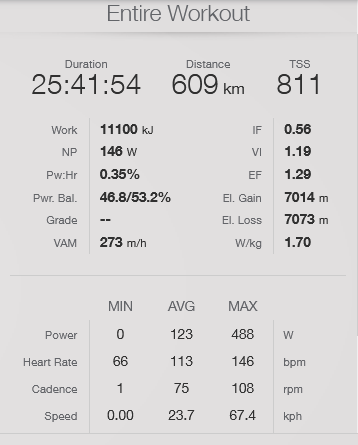
Overall, a riding plan executed well. For sure some lessons learned, especially with regard to nutrition. It’s OK to make mistakes, so long as you only make that mistake once. You learn something from every event you do.
From a coaching perspective, I also learnt a lot from this. I’m the first to admit I have no desire to do something like this. But I do love it when athletes have big, fat audacious goals. There is something special about events like this. It gives us coaches a huge amount of pleasure to help athletes realise their goals. But in the end, the athlete is the one that has done the work. And in this instance, has the mental strength to push through barriers most people could not. Why do we do it? For those fleeting moments of sheer magic. It is best summed up by this athlete when he said ‘I wanted to do it to see if I could’.
